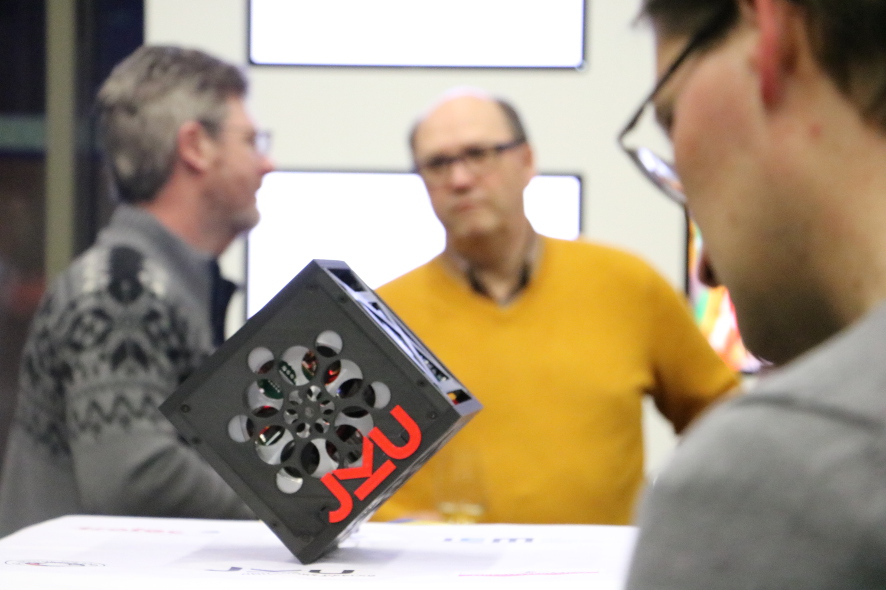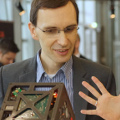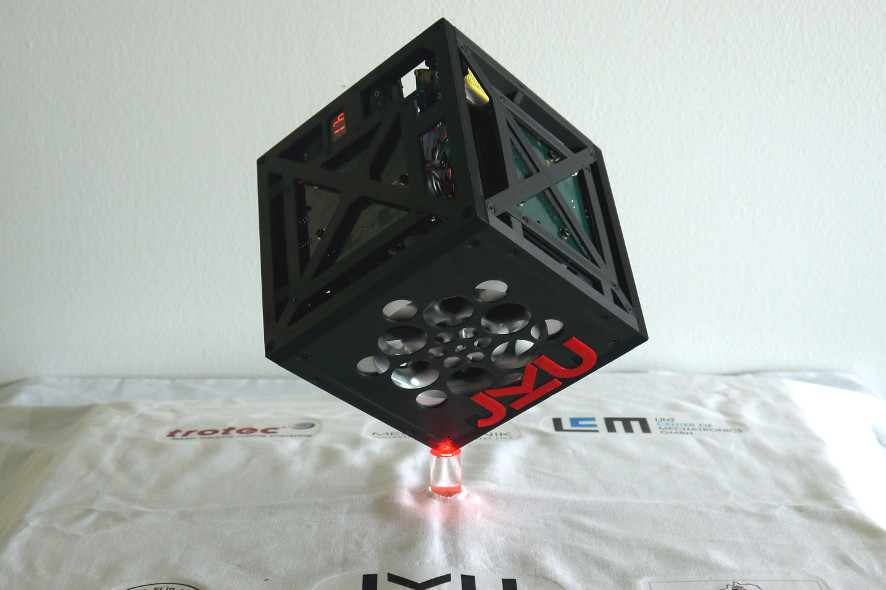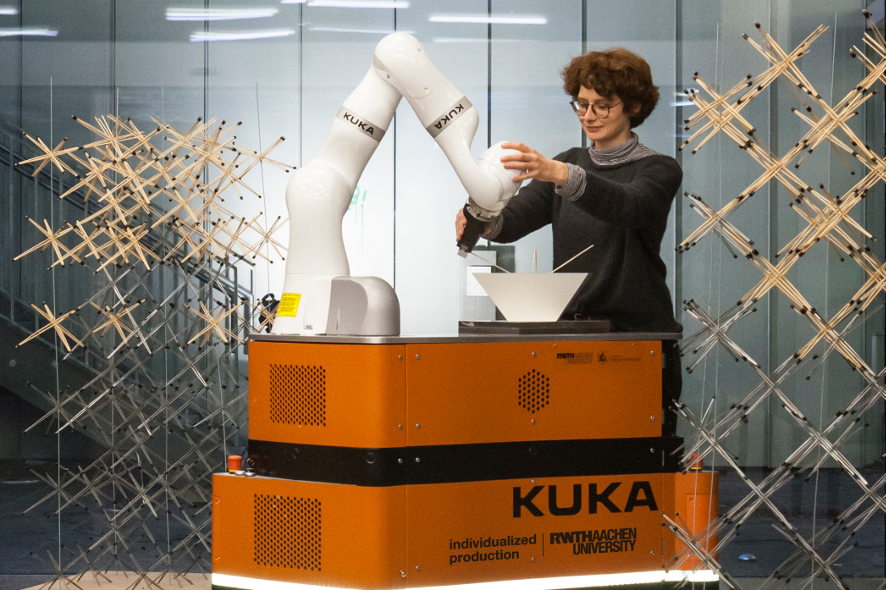But many of us, unsettled by rapid technical progress in robotics, are asking: Are robots taking over work for us, or are they taking it away from us? Or is it rather the case that they’re tools that enhance our capabilities and expand the horizon of our possibilities? In any case, robots are definitely multiplying options available to artists, and this will be demonstrated by the new Creative Robotics exhibition opening Thursday, February 9, 2017 at the Ars Electronica Center. This second installment in our Creative Robotics series showcases industrial robots that have made the transition beyond their conventional purview, the factory floor, to become instruments of creative expression.
And once again, we’ve assembled an alliance of partners from the robotics industry and the creative scene to demonstrate the diverse capabilities robots display outside the industrial sector. Now, robot arms aren’t just for mass assembly anymore; they’re become catalysts of innovation in the visual arts, design and architecture.
One of our partners, the Department of Robotics at Johannes Kepler University Linz, was also a key contributor to the first Creative Robotics exhibition. In the meantime, they’ve enhanced their self-balancing cube—last year, it balanced on one edge; this time around, it can balance on one corner. The robotic cube is able to independently compensate for external disturbances and changes in its immediate surroundings. This is accomplished by a built-in gyroscope like the ones used in satellites and drones. We talked to department chairman Andreas Müller about robots and the roles they’ll be playing in the future.

Last year the cube balanced on one edge … (Credit: Magdalena Sick-Leitner)
When you see this self-stabilizing, balancing cube, you don’t actually think of a robot. So, what makes robots different from conventional machines?

Andreas Müller: The application! A robot is an intelligent machine, but this term “robot” will become increasingly blurred in the future. According to the generally accepted definition, a service robot is a mobile, programmable mechanism with a certain degree of autonomy, one that performs particular useful tasks on behalf of its owner/operator. That about says it all. Maybe it’s informative to recall the origins of the term. It was coined by Czech author Karel Čapek, who first used it in his play “Rossum’s Universal Robots (R.U.R.).” He derived it from the Czech word robota, which sums up a robot’s task in a nutshell: it’s supposed to free up people from drudgery. Today, we’ve pretty much achieved this objective, and we’re all benefitting from it now.
Up to now, robots have been deployed almost exclusively in factories. Do you think this will change?
Andreas Müller: Definitely! Robotic systems of various sorts will make our everyday life easier and safer, and open up totally novel horizons of experience. Self-driving cars, intelligent harvesters, autonomous logistics systems, vacuum cleaners, assistive robots as companions for the elderly—they’re all robots. And an essential component of this is interlinking them online. Today, there’s talk of Industry 4.0, which means that everything’s connected. Many people are familiar with this in terms of being able to operate their TV set or stereo system with their smartphone, which they might also be using in conjunction with their refrigerator or electric car. Inherent network connectivity not only makes it possible to optimally utilize production systems to their full capacity and assure that they’re supplied as efficiently as possible; this is also the best way to monitor their performance and to carry out necessary repairs and maintenance as soon as there’s a problem.

… this year the cube balances only on one corner (Credit: Institute of Robotics, Johannes Kepler University Linz)
Do we have to be afraid of soon losing our jobs to robots?
Andreas Müller: The world of work will keep changing and automation will continue to progress. This is indispensible if we’re to raise productivity and assure the competitiveness of our economy. We have to come to terms with this transformation process and actively configure it. This opens up opportunities to a greater extent than it entails dangers. Thus, robots will be working more closely together with people in an interrelationship called “collaborative robotics.” This also means that not only highly qualified occupational groups will reap the benefits; all strata of the workforce are going to profit from the pervasiveness of robots.
Is this going to be like it’s portrayed in some Hollywood sci-fi films in which robots develop truly human traits?
Andreas Müller: I’m highly skeptical about this. And personally I don’t see the necessity of it. In fact, it’s often not even desirable for anthropomorphic robots—so-called humanoids—take on a human appearance. It’s a well-known phenomenon that the acceptance of humanoids declines drastically as soon as they exhibit a very strong physical resemblance to a human being, since this is perceived as scary—the humanoid is seen as a zombie. What’s lacking is empathy. In the near future, service robots will be helpful buddies that are recognizable as machines; they’ll have a relatively small stature and won’t be daunting giants, whereby the user remains in complete control.

Credit: Institute of Robotics, Johannes Kepler University Linz
JKU is developing, among other things, humanoid robots. What can they do and in what areas will they be deployed?
Andreas Müller: Our humanoid robot is named Awaro. It can walk, recognize its surroundings and thus react to impediments. And, needless to say, Awaro is absolutely beloved by our students. It fosters brainstorming and is used to demonstrate new concepts. It consistently brings out this “Eureka!” effect when it becomes clear that this is a combination of a computer, drive technology and mechanical engineering. There’s something in this for anyone interested in high-tech.
The Creative Robotics exhibition opens on Thursday, February 9, 2017. Admission is free of charge!
A special attraction at the vernissage is PRINT A DRINK, the world’s first 3-D printing process for mixed drinks. Watch a robotic arm precisely inject fine drops of oil into a “cocktail.”
